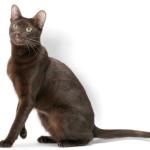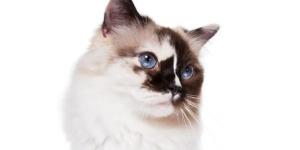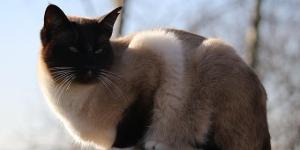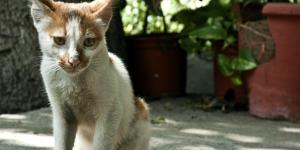Havana cat

The Havana cat comes from nineteenth century Europe, more specifically from England, where they began to be bread selecting brown Siamese cats. Later on, the brown Siamese cats were mixed with the Chocolate Point, which is when the breed acquired the characteristics that breeders are still looking for today.
It is also necessary to add that their name does not come from Cuba as we might think, but they bear that name because of their dark, tobacco-colored coat.
- Europe
- United Kingdom
- Category III
- 7-11
- 11-13
- 13-17
- 17-22
- 22-30
- 8-10
- 10-15
- 15-18
- 18-20
Physical traits
They usually weigh between 2.5 and 4.5 kilograms (5.5 lbs and 8.8 lbs), so we are talking about a medium sized cat. Their head is proportionate and usually shows two impressive green eyes that stand out with their dark coat, on top we find two separated large ears that give them a constant alert look. However, they can also have very different colored eyes. The body is strong and proportionate and the touch of their coat is soft, silky and fine. One of the attributes this breed has is the exuberant shine of their hair.
The Havana cat is only found in brown color but may vary slightly showing brownish or hazelnut tones. The standard of the breed, however, differs slightly depending on the country in which they are found. For example, in the USA they look for thick physical characteristics and presence while in England and the rest of Europe they look for a standard with a more oriental or exotic style.
Character
The Havana cat is a sweet companion who will ask for attention and affection every day. This is an active and very lively cat that likes to play and do new things; this is due to their genetics that Siamese cats have granted them, which makes them an especially clever and loving cat breed.
Many people choose the Havana cat for their particular behavior; they are usually especially affectionate towards a specific member of the family to whom they are faithful throughout their life. If you decide to adopt a cat and find a cat like this in your local shelter, you won't regret it. The independent yet sociable character of the Havana will make you fall in love.
Health
As with all breeds, we recommend that you go to the veterinarian at an early age so that the Havana cat receives their vaccinations and anti-parasites treatment. Failure to do so poses a risk even if the animal lives inside the home. Remember to put a chip on them in case they get lost.
They are a resistant breed although the diseases that most affect them are:
- Colds
- Pulmonary or respiratory abnormalities
- Endoparasites
Care
Although they are very active cats, they adapt well to life inside the home. Furthermore, they do not require specific care since they have a short coat and a weekly brushing will be enough. Activities are a fundamental part of the Havana cat that needs to exercise their muscles on a daily basis, for that reason, you should spend time to exercise with them and find a toy so that they can be entertained.
Having their vaccination up to date and offering a healthy diet will result in a cat with a beautiful coat and a healthy and strong animal. You must also protect them from colds and excessive humidity.
Remember that castrating your cat is an intelligent and supportive option that reminds us of the multitude of cats that are abandoned daily. Avoid infections, bad temper and a surprise litter by castrating your Havana cat.
Havana cat photos
















